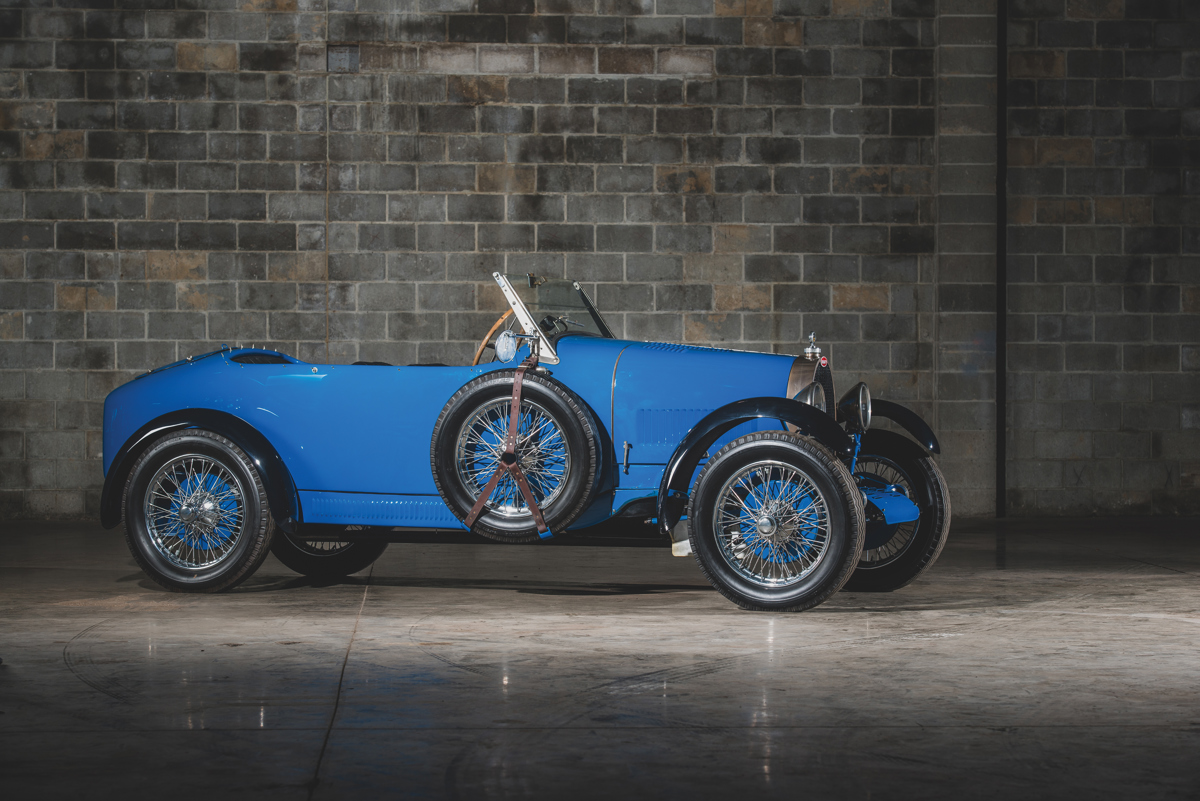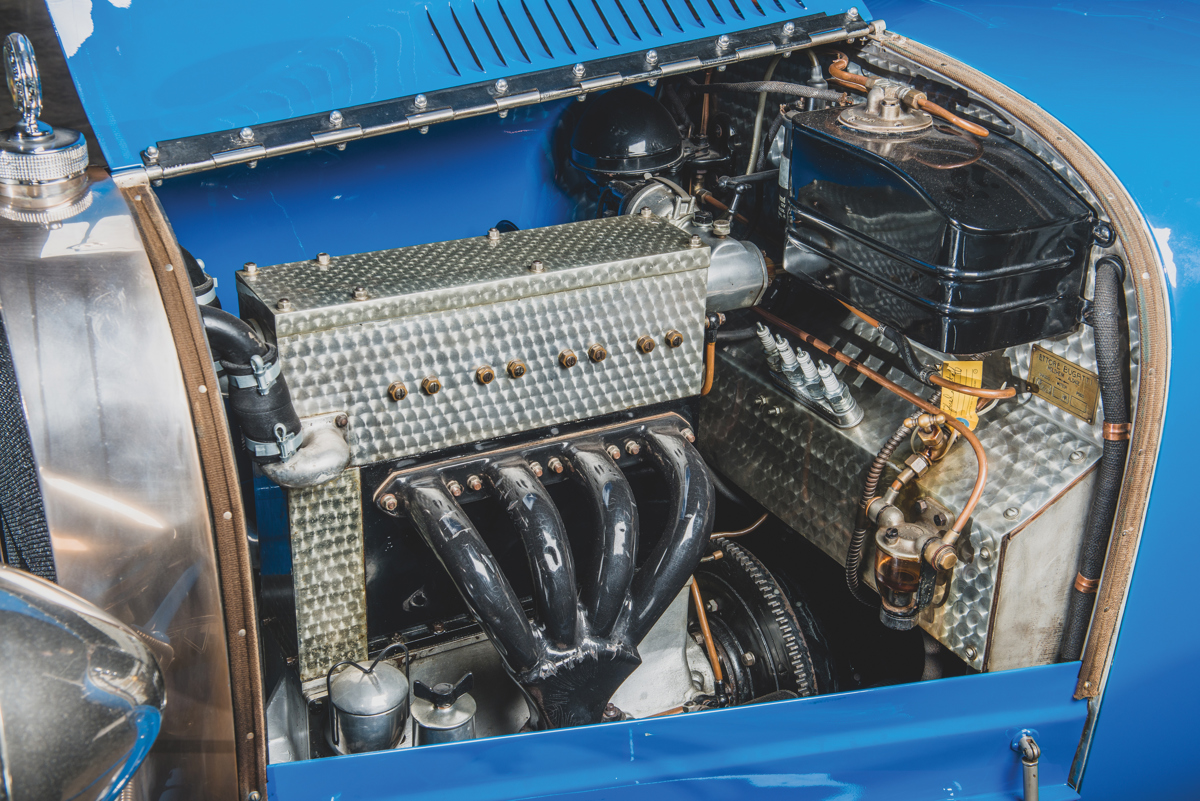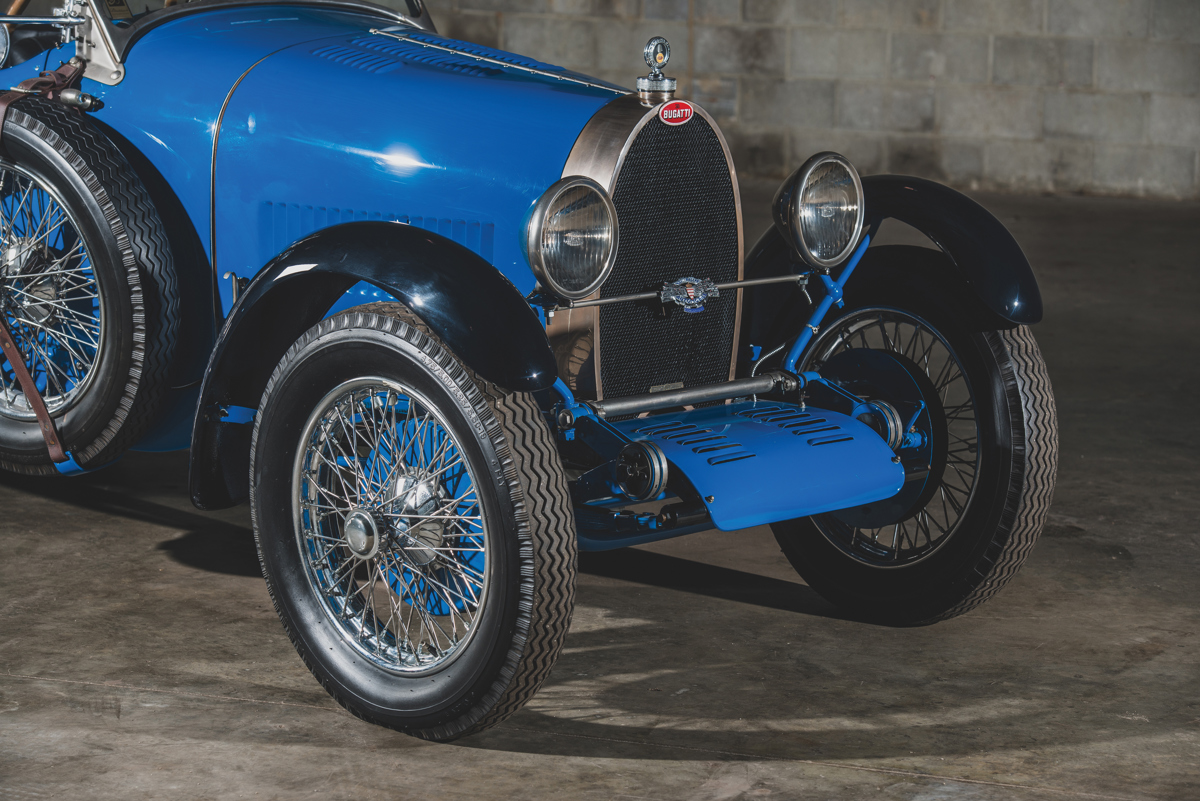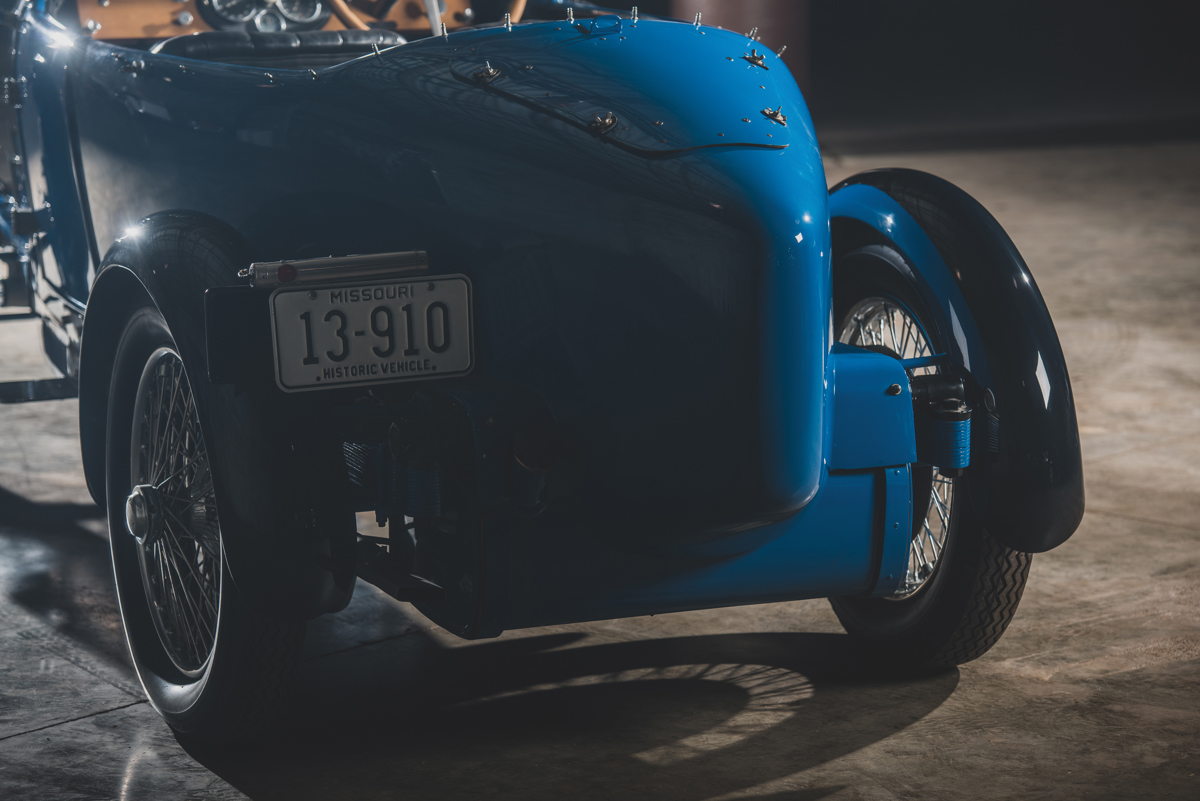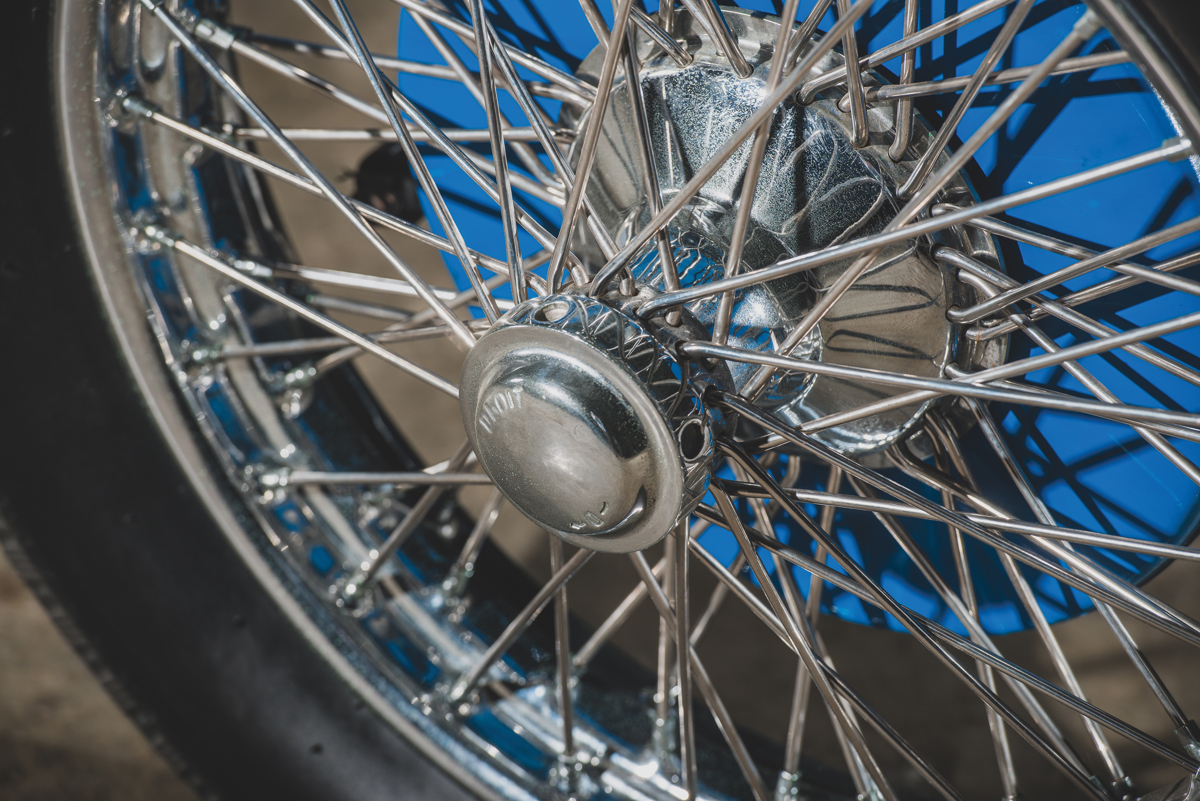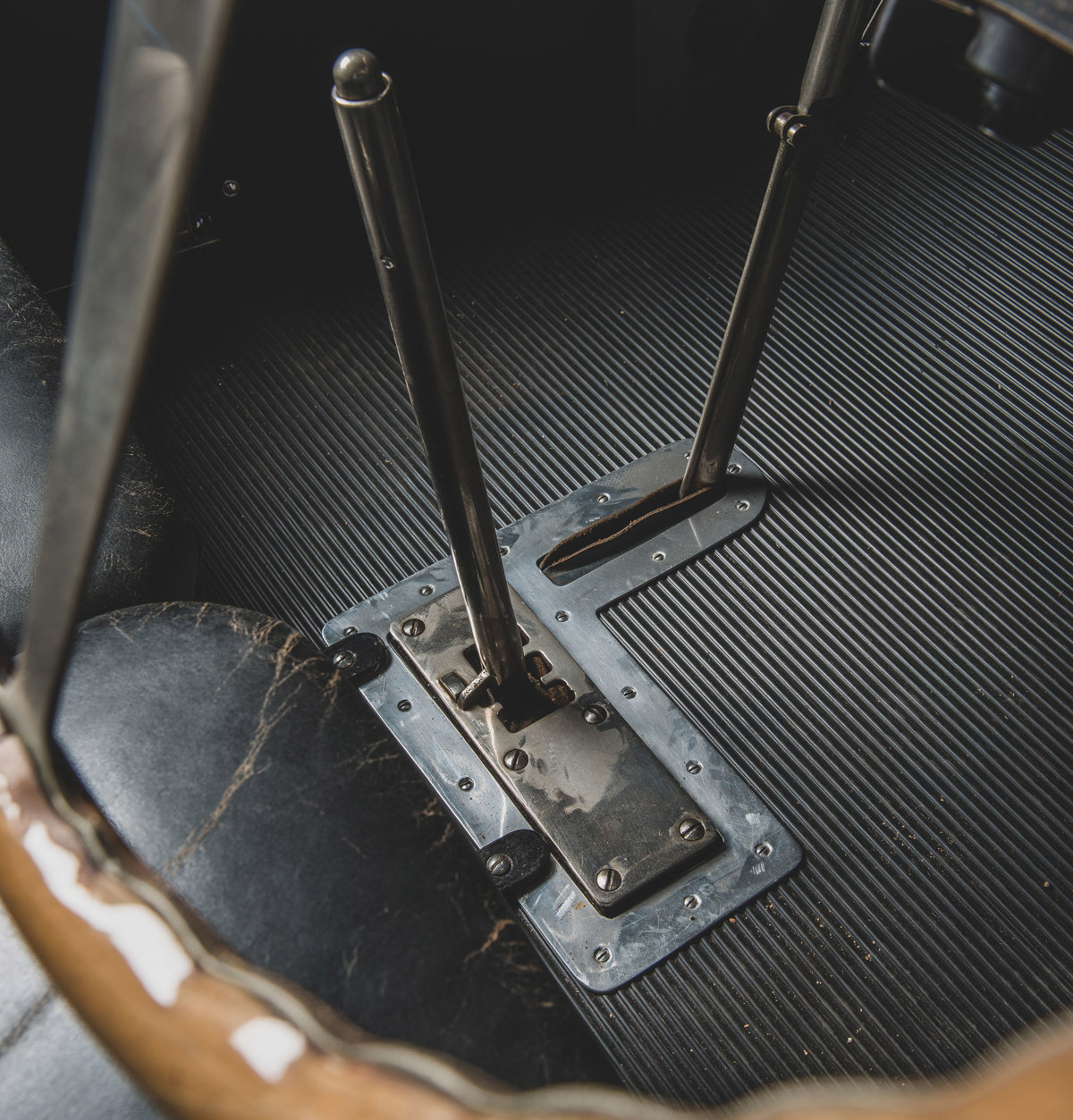The Type 40 was introduced in 1926 as the successor to the Brescia Bugatti as a standard touring car to capitalize on the 1.5 litre 12-valve engine. Several open and closed bodies were offered on the new short chassis, with the most popular iteration being the Grand Sport—a sporting, torpedo-shaped, four-seater open body. It was offered as an affordable alternative to the Bugatti’s famed Grand Prix cars while offering all the road-going attributes of its siblings: lightweight, lively, and responsive with excellent braking. Only 780 examples were produced, with Jean Bugatti taking the first production model as his own. Scroll down to explore the attributes of this highly sought-after roadster.
1927 Bugatti Type 40 Grand Sport
Estimate: $200,000 - $300,000 USD | Offered Without Reserve
Robust, Original Four-Cylinder Engine
A 45-horsepower, 1,496cc four-cylinder with a single overhead cam is at the heart of the lightweight roadster, revered as much for its reliability as its agility. The American Bugatti Club Register notes chassis no. 40661 was produced with engine number 565, which is retained in this example from The Guyton Collection.
Competition Proven Suspension Design
The Type 40 features a ladder-frame chassis with live front axle with semi-elliptic leaf springs, a live rear axle with inverted quarter-elliptic leaf springs, and adjustable shock absorbers, a design carried on from its Grand Prix-winning siblings and providing the marque’s unique world-dominating handling characteristics while remaining comfortable for around-town driving.
Sporty, Torpedo Shaped Bodywork
The four and eight cylinder model ranges mirrored each other to keep in Ettore Bugatti’s sense of stylistic harmony across the brand. The standard “Grand Sport” bodywork was shared between the Type 40 and Type 43, with the Type 40’s bodywork scaled down to fit the shorter chassis. Both shared the same boat-tail four-seater body with cycle-wings as opposed to full fenders and a small integrated trunk at the tail, though the smaller Type 40 was equipped with only a single door on the passenger side.
Powerful Braking System
The Type 40 utilizes a powerful cable-operated four-wheel drum braking system behind its lightweight wire-spoked wheels.
Four-Speed Transmission
The Type 40’s racy 1.5-litre engine spins up to approximately 4,000 rpm, and through the four-speed centre-change manual gearbox could reach speeds upward of 75 mph.


